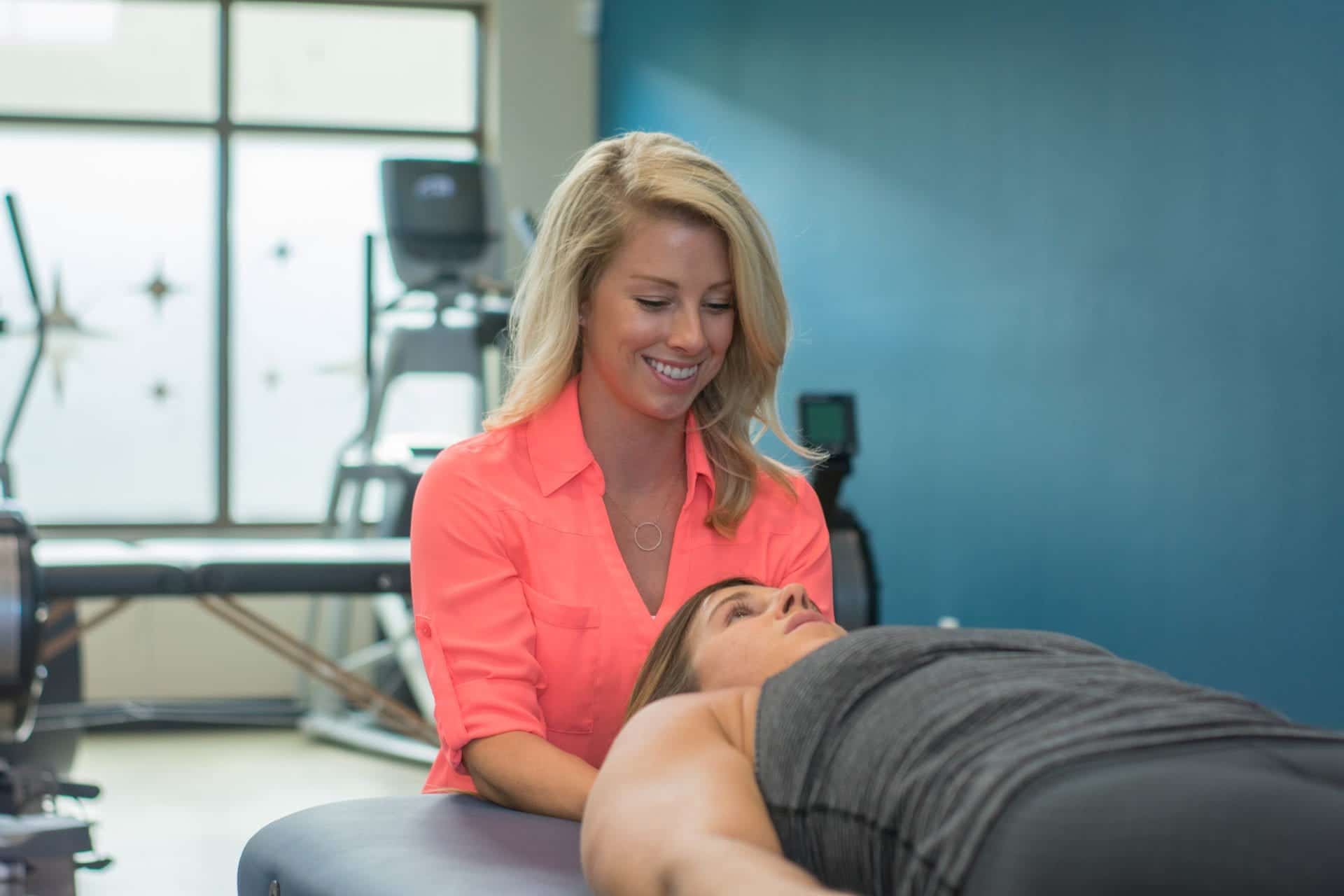

By: Lakeview Health
With the fact that many Americans suffer from pain on a daily basis and are often prescribed opioids to help relieve their pain, there has also been a growing concern with the relationship between pain management and addiction treatment centers. A 2015 analysis of data from the 2012 National Health Interview Survey found that “an estimated 25.3 million adults had pain every day for the preceding 3 months. Nearly 40 million adults (17.6 percent) experience severe levels of pain.” Until recently, potent narcotic pain medications were prescribed for many of those who suffer from chronic pain. Information available to most physicians indicated that opioid pain relievers (OPRs) had minimal risk of addiction. “Prior to around 2010, many physicians believed that high dose narcotic pain medication was safe and effective for most of those who suffer from chronic pain conditions,” says the Director of Psychiatry and Pain Recovery at Lakeview Health, Adrian Blotner, M.D.
“That has changed in recent years. Now, it’s the mainstream opinion is that prescribers should be very careful and closely monitor patients benefits and side effects in those who are taking long-term opioid pain relievers (OPRs).”
– Adrian Blotner, M.D.
There is a definite link between chronic pain and addiction, as over-prescription of OPRs is now widely blamed for the opioid crisis in the United States, and many states have introduced restrictions on the prescription of opioids. Others also blame a misguided approach to pain management that relied almost exclusively on OPRs. In a 2015 editorial in The New England Journal of Medicine, Jane C. Ballantyne, M.D., and Mark D. Sullivan, M.D., Ph.D., suggested we should be looking beyond pain intensity when evaluating the benefits of pain therapy. “Although the chronic-pain crisis can be attributed in part to the aging of the population, improved survival from disease and trauma, changes in disability policy, and multiple factors such as obesity that contribute to chronic ill health, the suggestion that chronic pain can and should be eliminated by opioids hasn’t helped.” They point out that opioids typically show good short-term efficacy but that there is little evidence for long-term benefits. “A lot of patients are quite disappointed with the results of their experience with ‘pain management’,” says Dr Blotner. “Many who were treated with opioid pain relievers (OPRs) complain that their pain continues to be moderate or severe in intensity. And their physical ability to do activities that they want and need to do remains significantly impaired, and they are still not getting the benefits they were hoping to get from their opioid pain relievers (OPRs). Some of these individuals then lose control and start to take more medication than was prescribed.”
Mental Health Issues Escalate Traditional Pain Management Methods
An important reason for this escalation may also be co-occurring mental conditions like anxiety, depression, or post-traumatic stress disorders. A high percentage of people with opioid addiction also suffer from a psychiatric disorder, which has been linked to an increase of OPR usage. “Sometimes they begin taking the narcotic pain medication to feel better not just physically, but also emotionally” notes Dr. Blotner. Some begin to purchase non-prescribed or “diverted” narcotics. “Some people who abuse substances don’t have a pain condition,” explains Dr. Blotner. “But some who suffer from chronic pain who feel that they are not able to get adequate opioid pain relievers (OPRs) from a prescriber begin to purchase non-prescribed or “diverted” narcotics, even heroin.” In view of the escalating opioid overdose epidemic, the Centers for Disease Control and Prevention (CDC) issued new guidelines in 2016 to “ensure patients have access to safer, more effective chronic pain treatment while reducing the number of people who misuse, abuse, or overdose from these drugs.” So far, though, the number of drug overdoses continue rising. In March, the CDC issued a new report that revealed a 21 percent increase in the number of overdose deaths in 2016 when compared to 2015. “Year after year, we’re disappointed when the overdose numbers come out, because they keep going up,” says Blotner. “My opinion is that, at this point in time, the opiate epidemic is increasingly due to narcotics that are illegally manufactured and sold ‘on the street,’ and not from narcotic pain medications that are appropriately being prescribed for those who truly suffer from pain conditions.” The biggest factor in the increase in overdose deaths has been the synthetic opioid fentanyl and related highly toxic substances. “There’s now a fentanyl pill that can be purchased ‘on the street’,” says Blotner. “Legal fentanyl comes in a patch for pain management purposes and in an injectable form for anesthesia purposes, but there are no legally produced fentanyl pills.”
The Three Pillars of Pain Recovery Are The Foundation for Health and Healing
For those who suffer from the disease of addiction, habit-forming narcotic medications are no longer effective in reducing pain and the adverse physical, mental, and emotional effects become increasingly severe. Lakeview Health has developed an approach to pain therapy that relies on healthier and more comprehensive substance abuse treatment. The Lakeview Health team goes for Pain Recovery instead. “Pain Recovery means we’re emphasizing healthy physical activity, non-habit-forming medications that treat the nerves that transmit the pain, stress management and lifestyle adjustments to improve patients’ ability to function without harming their bodies,” says Dr. Blotner.
Pillar #1: Healthy Physical Activity
The first pillar of pain recovery is healthy physical activity. Many pain patients shy away from normal physical activity because they fear it will intensify their pain. A more effective approach emphasizes pain reduction as well as functional improvement for those whose pain has worsened or not improved with prior trials of physical therapy. It has to be carefully calibrated, though. “Our program at Lakeview emphasizes a healthy physical activity regimen that is tailored to an individual’s current physical activity capacity and guided by physical therapists who focus on reducing pain and ‘do no harm’ as their highest priority. Improving physical activity levels and developing a personalized home exercise program then follows,” explains Dr. Blotner.
Pillar #2: Non-Opioid Analgesics
The second pillar is non-opioid analgesics. “Opioid pain relievers are replaced by non-habit-forming medications that treat the underlying causes of the pain, including those that act on nerve pathways that transmit the pain signals,” says Blotner. “The non-habit-forming medication is sometimes combined with nutritional elements, with the goal of reducing physical pain, while at the same time improving sleep, energy, concentration & memory. This has to be achieved with medication that does not cause adverse side effects. We also treat the anxiety and mood symptoms that so often occur in those who suffer from chronic pain. We emphasize non-medication techniques, with the use of non-habit-forming medications where indicated.”
Pillar #3: Managing Stress & Adjusting Lifestyle
The third pillar involves managing stress and adjusting lifestyle. Patients learn to better understand the amplifying effect that stress can have on chronic pain and to acquire new coping skills that reduce that negative impact that stress can have on their mind and body. They explore new ways that they can function better in the life roles they deem most important, such as a parent, spouse, friend, or in their work. It can even involve improved ability to function in existential, spiritual, or religious aspects of their life. The Lakeview Health Pain Recovery Program offers pain recovery solutions that are consistent with recently published CDC guidelines regarding the treatment of chronic pain. “Those guidelines include all the non-opioid treatments that providers should be offering or referring patients to,” says Blotner. “When your primary care physician refers you to ‘pain management,’ many of these treatments are often not offered. Well, at Lakeview Health we are providing these treatments in an integrated way. When our patients experience the benefits of these treatments, they often ask, ‘Why has no one ever offered these treatments to me before? What you are offering is working and it’s making sense.’ The only thing I can tell them is that not many treatment providers have the time and the specialty expertise to offer and integrate these treatments the way that we do.”





